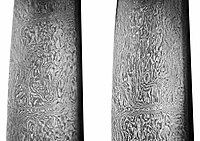
Photo from wikipedia
Abstract Additive Layer Manufacturing (ALM) of metals is rapidly changing the landscape of industrial manufacturing. Its deployment is however still hindered by extremely rough native surfaces, and drastic difficulties in… Click to show full abstract
Abstract Additive Layer Manufacturing (ALM) of metals is rapidly changing the landscape of industrial manufacturing. Its deployment is however still hindered by extremely rough native surfaces, and drastic difficulties in efficiently applying conventional finishing methods. This paper presents the PALMS process, derived from electrolytic plasma polishing, as a solution to this problem. The viability of the process on a scale compatible with commercial use is demonstrated with a prototype industrial implementation. PALMS was applied on AISI 316 stainless steel pieces produced either by ALM or by conventional machining (CM.) Surface states, microstructures and other properties were compared pre- and post-PALMS. Significant improvements in surface state were observed after a 10 min treatment, with a 5-fold reduction in roughness. ALM surfaces were not affected negatively by PALMS in any way measured, and showed slight improvements in hardness and pore density. Two PVD coatings (TiN and WCC) were finally applied Post-PALMS, to test the compatibility of the process with further industrially relevant surface treatments. PALMS enables good coating adhesion on ALM pieces, with improved friction and wear properties compared to their CM counterparts.
Journal Title: Additive manufacturing
Year Published: 2020
Link to full text (if available)
Share on Social Media: Sign Up to like & get
recommendations!